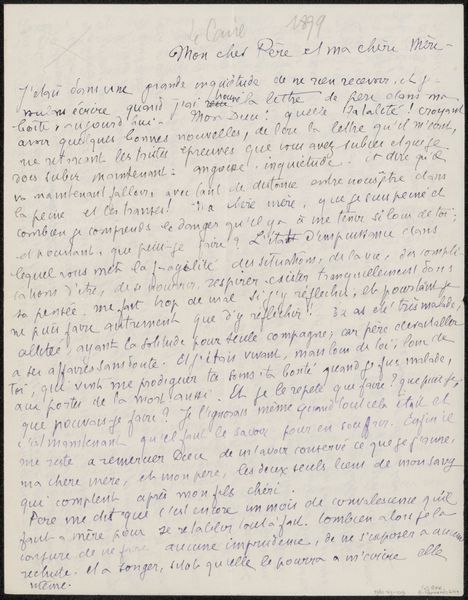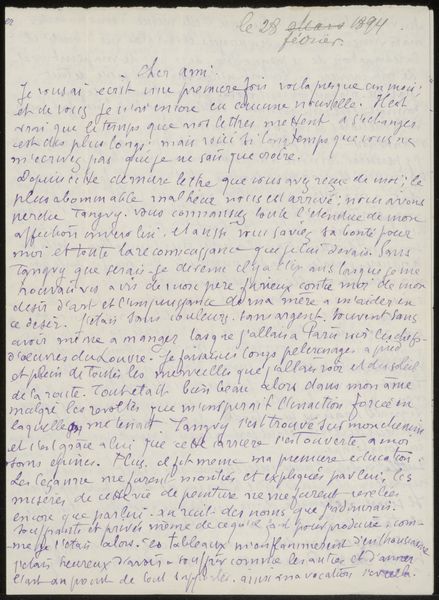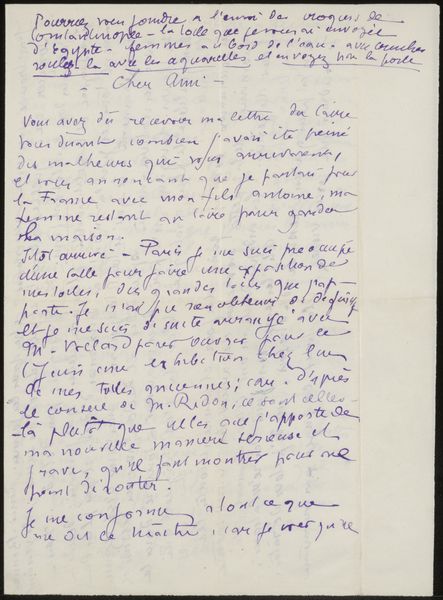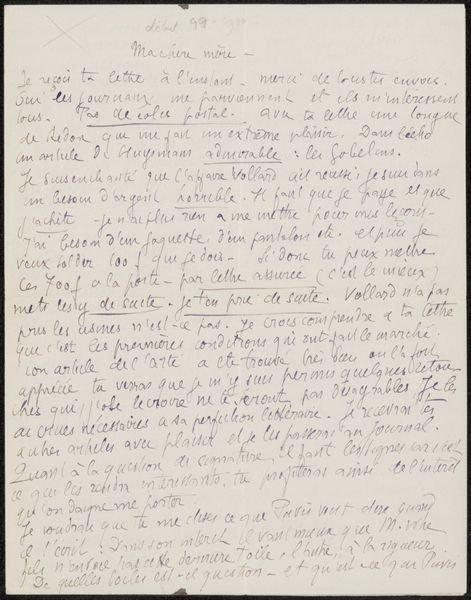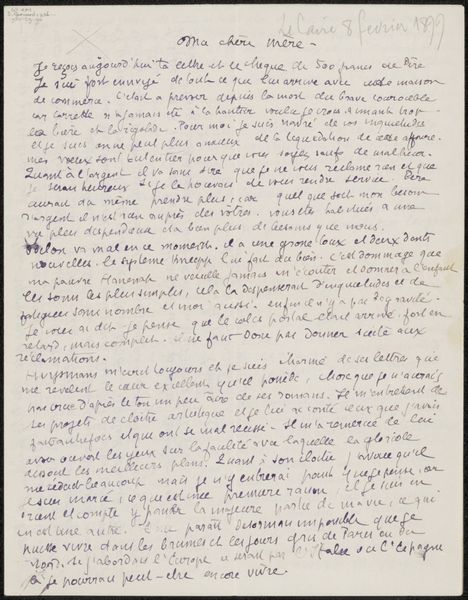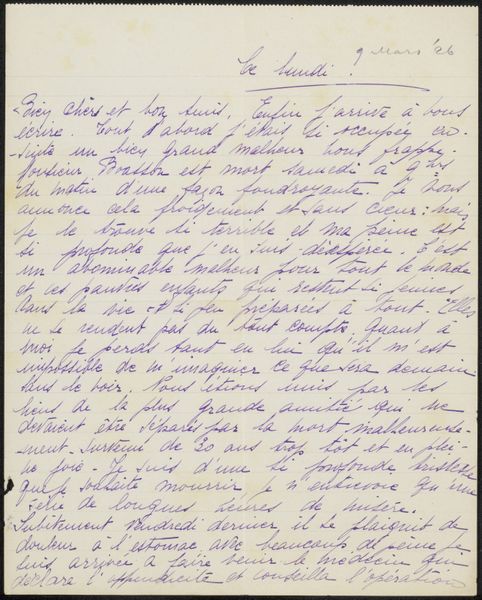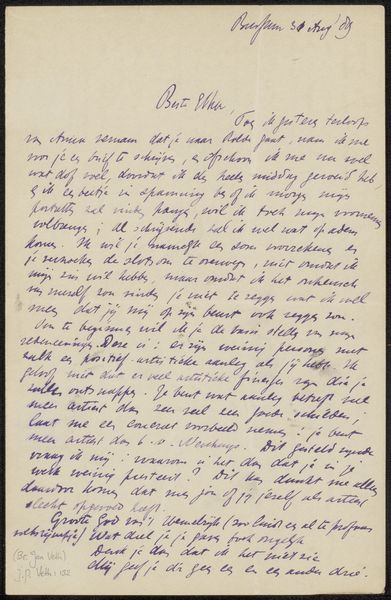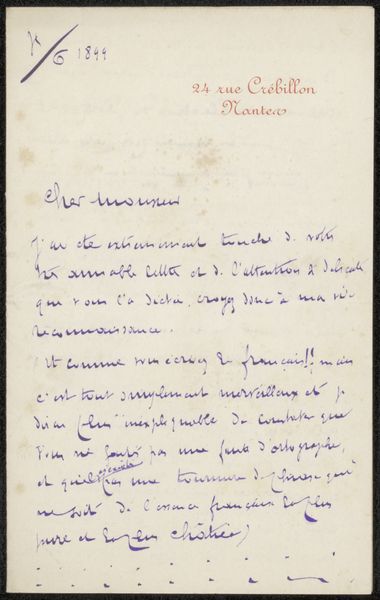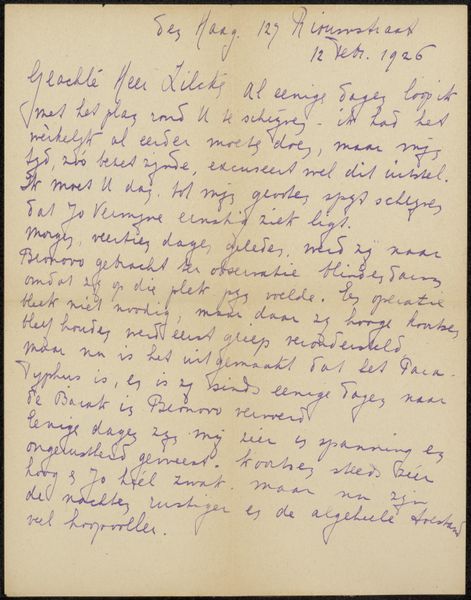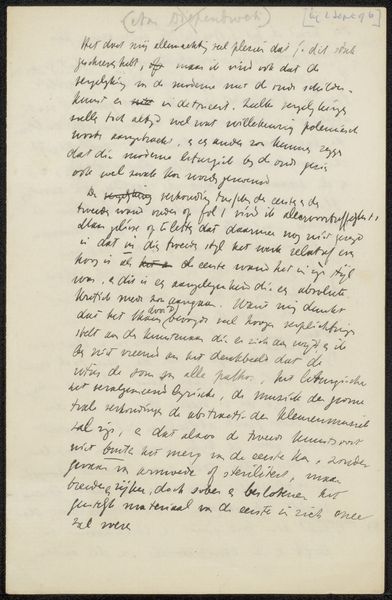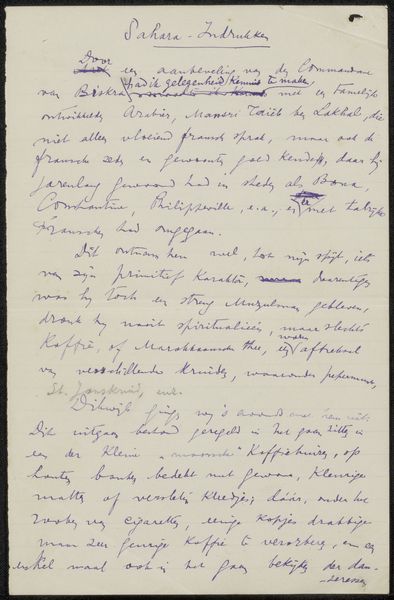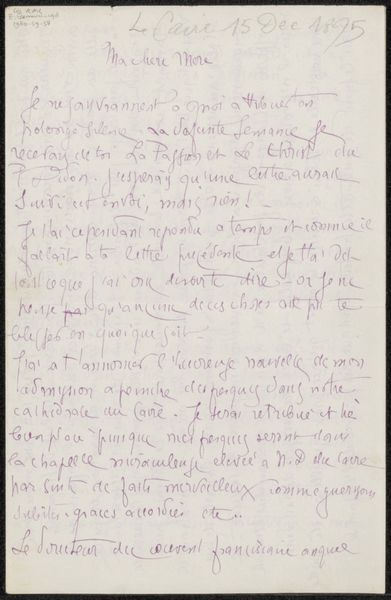
drawing, paper, ink
#
drawing
#
paper
#
personal sketchbook
#
ink
Copyright: Rijks Museum: Open Domain
Curator: Today we're looking at "Brief aan Emile Ernest Bernard en Héloïse Bernard-Bodin," a drawing by Emile Bernard created sometime between 1878 and 1941. It's rendered in ink on paper. Editor: Immediately, the density of text filling nearly the entire surface evokes the intimacy of personal correspondence—or maybe even a fragment of a diary. There is an emotional urgency hinted at by the cramped script. Curator: Indeed. The very materiality speaks to a specific mode of communication—ink's fluid lines allowed Bernard to quickly transfer his thoughts. This contrasts sharply with the labor of printing which at the time would have required more material and investment of time. Editor: Precisely. The choice of humble paper and relatively inexpensive ink democratizes the message, giving immediacy to the content itself. What we see isn’t the preciousness of high art materials but a workmanlike functionality. It appears that we're gazing at private writings on an inexpensive support, meant for swift exchange and personal reflection. Curator: Notice, however, how the flow and rhythm of the script, and how that ink lays down, form patterns irrespective of its literal meanings. The ascenders and descenders create a textural landscape across the page—an independent formal quality which is only incidentally related to legibility. Even if we can’t fully decipher every word, our gaze can still aesthetically follow it. Editor: That’s fascinating. Even without fully grasping the language, the hand traces create an intimate experience of bearing witness to his labor. Curator: In conclusion, "Brief aan Emile Ernest Bernard en Héloïse Bernard-Bodin," exemplifies how raw personal materials are harnessed in the expression of self. Editor: The intersection of script and social context allows an exchange to transform personal labour into its lasting trace: art.
Comments
No comments
Be the first to comment and join the conversation on the ultimate creative platform.
